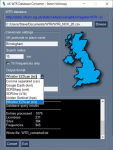manxman
Member
Howdy folks, and warm regards from the tropical Isle of Man!
I'm getting back into the hobby, having recently upgraded my 3500XLT to an SDS-100E, and to say I'm finding it complicated would be an understatement. Can somebody please point me in the right direction for some high-level steps to getting started in programming a trunked system, right down to knowing which frequencies to program for a Site? I'm guessing I'd use Close Call to get started with a frequency and any other visible data that comes with it (Talk Group, unit ID, etc) but there are so many variables involved with Digital that I'm a little lost.
Finally (and I realise I'm in no position to ask for help and make demands at the same time, so forgive me) please send me no links to YouTube. I've watched hours of footage of people navigating their scanner's menus and reading out what they see, but hardly any of them actually explain anything. A written list of instructions is usually much better.
Thanks a million in advance!
I'm getting back into the hobby, having recently upgraded my 3500XLT to an SDS-100E, and to say I'm finding it complicated would be an understatement. Can somebody please point me in the right direction for some high-level steps to getting started in programming a trunked system, right down to knowing which frequencies to program for a Site? I'm guessing I'd use Close Call to get started with a frequency and any other visible data that comes with it (Talk Group, unit ID, etc) but there are so many variables involved with Digital that I'm a little lost.
Finally (and I realise I'm in no position to ask for help and make demands at the same time, so forgive me) please send me no links to YouTube. I've watched hours of footage of people navigating their scanner's menus and reading out what they see, but hardly any of them actually explain anything. A written list of instructions is usually much better.
Thanks a million in advance!



